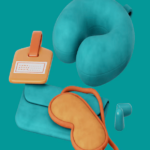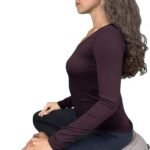I. Introduction
Discover the best meditation cushion for bad knees that can provide the support and comfort you need for a pain-free meditation experience. Learn how the right cushion can alleviate pressure and enhance your posture during practice.
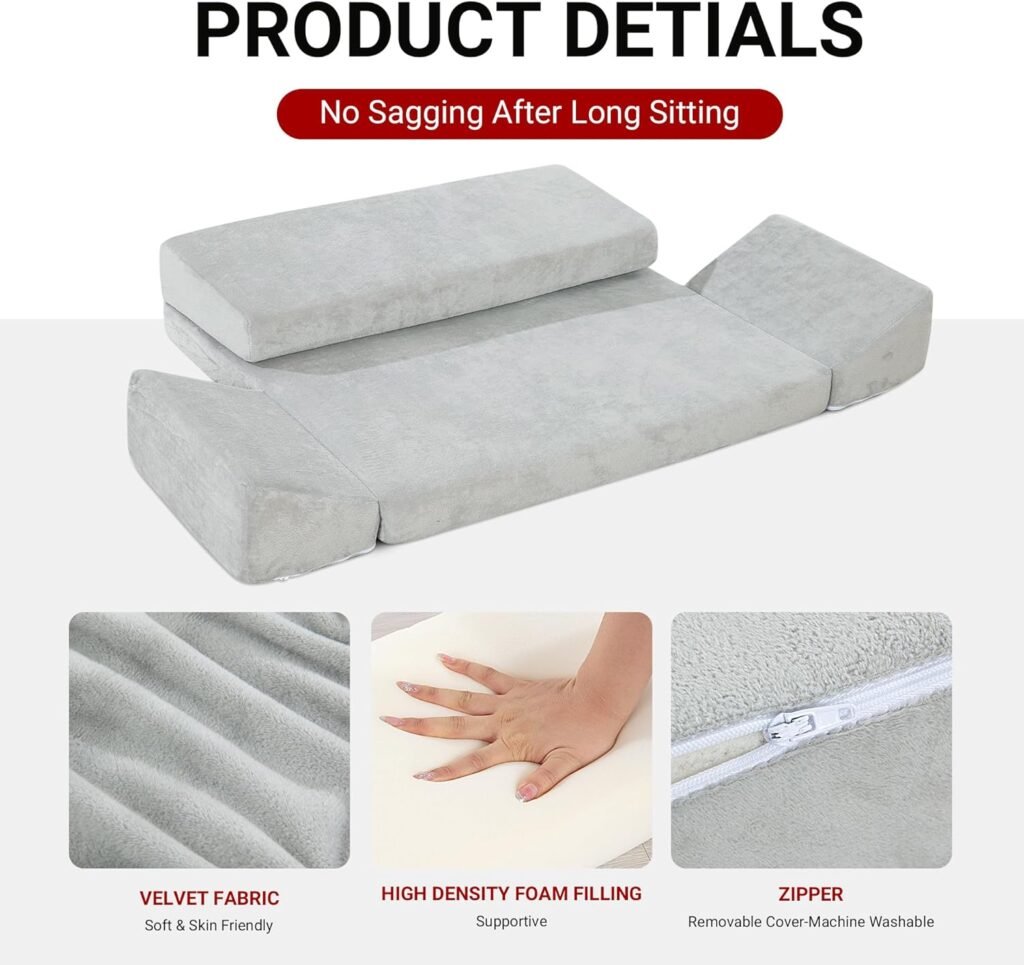
A. Understanding the Importance of Knee Support in Meditation
Meditation can be transformative for the mind, body, and soul, but it’s not without its physical challenges—especially for those with knee discomfort. Bad knees can quickly turn a calming meditation session into an uncomfortable experience. This is where the importance of a meditation cushion for bad knees comes into play.
These cushions are designed specifically to support your knees, helping you find comfort and focus without the distraction of joint pain. They offer elevation, stability, and proper alignment, which are crucial for minimizing knee stress during seated postures.
B. Why Choosing the Right Cushion Matters for Knee Health
If knee pain has been holding you back from deeper meditation, choosing the right cushion can be a game-changer. A well-designed meditation cushion for bad knees provides the necessary height and firmness to align your knees and hips correctly, reducing the strain on your joints.
With the right cushion, you can meditate longer without having to shift or readjust frequently due to knee pain. Not only does this help alleviate discomfort, but it also promotes better overall knee health by minimizing pressure on delicate areas.
C. How Meditation Cushions Can Help Alleviate Knee Discomfort
The best meditation cushions are made to relieve knee pain by redistributing weight away from sensitive joints. Elevating the hips with a cushion allows your knees to rest naturally below your hips, reducing tension in the knee area.
By enhancing posture and comfort, a meditation cushion for bad knees can turn meditation into a pain-free experience, making it easier to maintain focus and achieve a deeper level of mindfulness.
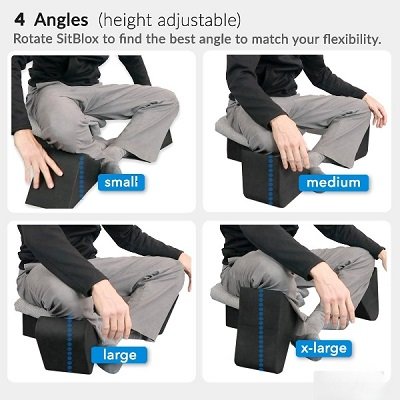
II. Common Challenges for People with Bad Knees in Meditation
A. Pain and Pressure Points in Traditional Meditation Poses
Traditional meditation postures, like the lotus or cross-legged positions, can create pressure points that aggravate knee pain. Sitting on the floor without proper support places a lot of weight on the knees, which can lead to pain, especially for those with existing knee issues.
A supportive meditation cushion for bad knees offers targeted support that helps reduce pressure on these areas, making it possible to sit comfortably for extended periods.
B. Common Postural Issues Impacting Knee Comfort
Many people struggle with postural issues, such as misalignment or poor hip flexibility, which can lead to added stress on the knees during meditation. When your spine and hips are misaligned, it forces your knees to bear extra weight, leading to discomfort.
A high-quality meditation cushion for bad knees helps align the body correctly, supporting both the hips and spine, which reduces strain on the knees and allows for a more stable, relaxed meditation posture.
C. The Impact of Knee Problems on Meditation Duration and Focus
Knee discomfort can make it nearly impossible to meditate for long durations. When your knees are in pain, it’s challenging to concentrate, which diminishes the effectiveness of the practice. A meditation cushion for bad knees helps to extend meditation sessions by reducing discomfort, allowing for deeper focus and a more rewarding meditation experience.
By addressing knee pain, these cushions enable practitioners to dedicate their full attention to mindfulness rather than to managing physical discomfort.
III. Key Features of Meditation Cushions for Knee Support
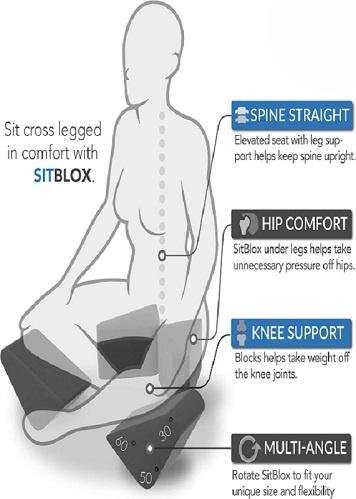
A. Cushion Height and Elevation for Knee Relief
The height of a meditation cushion can significantly impact comfort levels for those with knee issues. A well-chosen height elevates the hips above the knees, creating a natural downward slope that relieves knee pressure.
A slightly elevated meditation cushion for bad knees is ideal for achieving this ergonomic alignment, making it easier to sit comfortably and maintain balance.
B. Firmness Levels for Optimal Knee Support
Firmness is another crucial factor when choosing a meditation cushion for knee health. A firmer cushion provides stable support, ensuring that your knees aren’t forced into awkward angles. Overly soft cushions might sink under pressure, which could strain the knees further.
Look for a meditation cushion for bad knees with the right firmness level to maintain stable support throughout your practice.
C. Shape and Design: Crescent, Round, and Rectangular Cushions
Different cushion shapes offer unique support options for knees. Crescent-shaped cushions help align the hips and knees, making them great for people who need extra knee support. Round zafu cushions provide a solid foundation, while rectangular cushions or benches offer flexibility in sitting positions.
Choosing the best meditation cushion for bad knees often depends on experimenting with these shapes to find which one offers the most comfort for your unique body needs.
D. Material and Filling Choices for Long-lasting Comfort
The filling of a meditation cushion greatly affects its comfort and durability. Popular fillings include buckwheat hulls, which conform to your body shape, and kapok, a softer, lightweight material. Each type of filling has its own benefits; buckwheat hulls, for instance, provide firmer support, while kapok offers a cushier feel.
Selecting a meditation cushion for bad knees with the right material ensures lasting comfort and better support.
IV. Types of Meditation Cushions Best Suited for Bad Knees
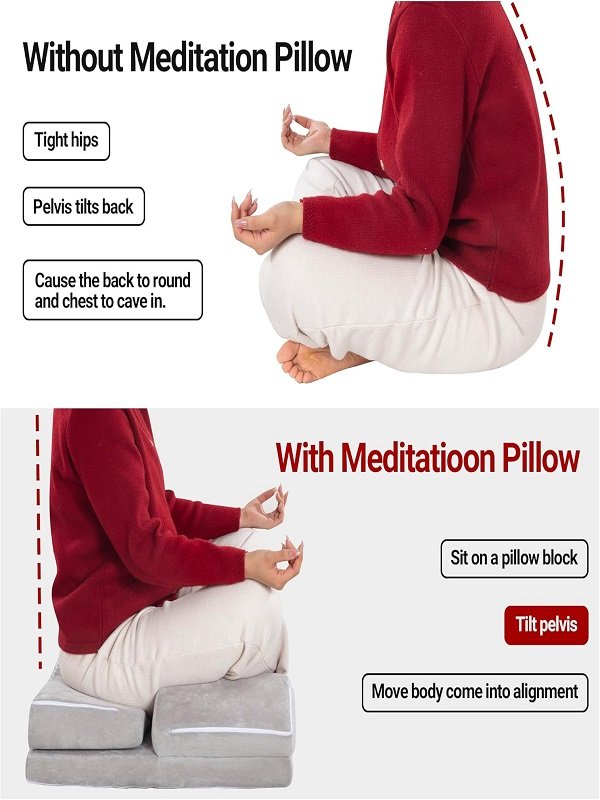
A. Zafu Cushions and Their Benefits for Knee Comfort
Zafu cushions are one of the most popular choices for meditators with knee issues. With their rounded, supportive design, zafus elevate the hips and help align the spine, which reduces knee strain.
A meditation cushion for bad knees like the zafu provides solid, comfortable support, allowing for prolonged sitting in various meditation postures.
B. Zabuton Cushions as a Base for Knee Protection
When paired with a zafu, a zabuton acts as a base that cushions the knees and ankles. This extra layer of padding prevents the knees from pressing directly on hard surfaces, offering enhanced comfort.
For those with severe knee issues, a meditation cushion for bad knees set, including a zafu and a zabuton, can make a world of difference.
C. Crescent Cushions for Enhanced Knee Alignment
Crescent cushions, with their unique shape, offer a tailored fit around the legs, helping align the knees and hips. They are especially useful for meditators who need more knee flexibility and support.
Using a crescent-shaped meditation cushion for bad knees can significantly improve alignment and reduce discomfort during meditation.
D. Bench Cushions for Alternative Sitting Positions
Meditation benches provide an excellent alternative to traditional floor cushions. By allowing practitioners to sit in a kneeling position, benches eliminate direct knee pressure, making them a top choice for anyone with significant knee pain.
A meditation cushion for bad knees paired with a bench creates an ergonomic sitting posture that reduces knee stress entirely.
E. Adjustable Cushions for Personalized Knee Support
For those who prefer a customized seating experience, adjustable cushions allow for modifications in height and firmness, ensuring tailored comfort. Adjustable meditation cushions for bad knees are ideal for meditators who may need different levels of support depending on their current knee condition.
V. Popular Filling Options and Their Impact on Knee Support
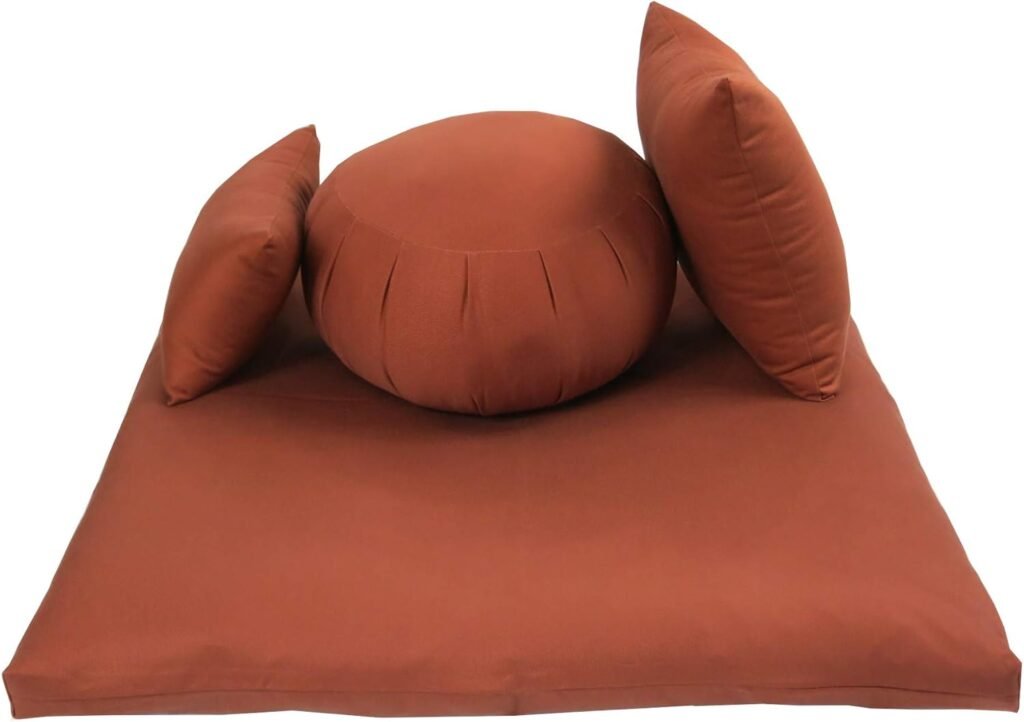
A. Buckwheat Hulls: Benefits for Knee and Body Contouring
Buckwheat hulls are a popular filling choice for those looking to reduce knee pain during meditation. Known for their natural firmness and ability to contour, buckwheat hulls provide excellent support for both the knees and lower back. By molding to the body, these cushions help maintain posture while relieving pressure points.
This filling makes a meditation cushion for bad knees an ideal choice, offering a blend of stability and ergonomic comfort.
B. Kapok Fiber: Lightweight and Firm Support for Bad Knees🪶💪
Kapok fiber is a lightweight and eco-friendly option often used in meditation cushions. It provides firm support while remaining soft enough to prevent knee strain, especially helpful for individuals needing extra cushioning without added weight.
Kapok cushions are particularly beneficial for those who want a meditation cushion for knee pain that maintains stability without sinking over time.
C. Memory Foam: Adapting to Pressure for Knee Relief
Memory foam is a versatile filling that adapts to the contours of your body, distributing weight evenly and reducing knee pressure. For meditators with knee discomfort, a memory foam meditation cushion for bad knees provides targeted support by conforming to the knee and hip alignment.
This adaptability makes it a great choice for relieving tension and maintaining a comfortable meditation posture for extended periods.
D. Cotton Filling: Softness and Stability Balance
Cotton filling offers a balance between firmness and softness, providing gentle support for those with sensitive knees. Its soft yet stable texture allows the cushion to support the knees without causing discomfort. A cotton-filled meditation cushion for bad knees is often preferred by meditators who need moderate support but prioritize a plush seating experience.
VI. Selecting the Right Cushion for Your Specific Knee Needs
A. Assessing Your Current Knee Condition and Pain Level
Before choosing a meditation cushion, it’s essential to consider your specific knee needs. Assessing the current state of your knees, any existing pain levels, and how long you intend to meditate can help determine the ideal cushion type.
If your knee discomfort varies, an adjustable or customizable meditation cushion for bad knees may be the best choice, allowing you to modify the height and firmness based on daily needs.
B. Determining Optimal Cushion Height and Support Level
The height of your meditation cushion significantly affects knee comfort. Cushions that provide a slight elevation can reduce strain on the knees by positioning the hips higher. By choosing a meditation cushion for knee support that matches your body’s structure, you can alleviate knee tension and maintain a relaxed posture.
For added support, consider cushions with adjustable height options to customize for comfort.
C. Finding the Right Cushion Shape for Knee-Friendly Posture
Selecting the appropriate shape can make all the difference for those with knee issues. Crescent-shaped cushions provide room for the legs, reducing knee pressure, while round zafus offer balanced elevation. For meditators with pronounced knee pain, a bench cushion might be the best meditation cushion for knee relief, allowing for a kneeling posture that eliminates direct knee pressure.
D. Choosing Materials Based on Durability and Comfort Needs
Durability and comfort are essential when selecting a meditation cushion, especially if you’ll be using it frequently. Materials like cotton and buckwheat hulls are long-lasting and breathable, while memory foam offers a modern touch of adaptability.
For those with severe knee pain, choosing a high-quality meditation cushion for bad knees can ensure that the cushion remains supportive over time and prevents knee strain.
VII. Best Meditation Cushions for Knee-Friendly Sitting Postures
A. Full Lotus and Half Lotus with Cushions
The full lotus and half lotus are traditional meditation poses that place significant strain on the knees. By using an elevated meditation cushion for bad knees, these poses become more accessible and comfortable, as the cushion helps lift the hips and relieve knee pressure.
Choosing the right cushion allows practitioners to experience these postures with better alignment and less knee discomfort.
B. Seiza and Kneeling Poses with Meditation Benches
Seiza, a kneeling posture commonly used in Zen meditation, is a comfortable option for those with knee pain when combined with a meditation bench. A meditation bench for bad knees provides a stable surface that takes the pressure off the knees by allowing you to sit with a straight spine and relaxed legs, helping you focus on your practice rather than discomfort.
C. Cross-Legged Poses with Heightened Support
Cross-legged poses, such as Sukhasana, are commonly practiced but can be challenging for those with knee issues. With a meditation cushion for knee support that offers the right height, practitioners can keep their knees aligned and hips elevated, creating a stable base that relieves pressure on the knees.
D. Using Cushions for Reclining Meditation Postures
For those who experience severe knee pain, reclining postures with a supportive cushion can offer a way to meditate without direct pressure on the knees. A reclining meditation cushion for knee relief provides enough support for the lower back and legs, allowing meditators to find peace without compromising comfort.
VIII. Meditation Bench vs. Meditation Cushion: Which Is Better for Bad Knees?
A. Pros and Cons of Meditation Benches for Knee Relief
Meditation benches offer unique benefits for those with knee pain. By supporting a kneeling position, they take pressure off the knees and encourage proper alignment. However, benches can be less portable and require additional padding for comfort.
For some, a meditation bench for knee pain can be the perfect solution, while others might prefer the versatility of a cushion.
B. Comparing Cushion Benefits to Meditation Benches
Meditation cushions, especially those tailored for knee support, offer more flexibility in sitting positions and are generally easier to transport. They provide customized support that can adapt to different poses, unlike benches that primarily suit kneeling postures.
If you prefer variety, a meditation cushion for bad knees may be more adaptable, while a bench can be ideal for those who need knee-focused relief.
C. Key Factors for Choosing Between a Bench or Cushion
When deciding between a bench and a cushion, consider your specific needs. For flexible support in multiple postures, a cushion might be more suitable. For dedicated knee relief in kneeling positions, a bench may provide the targeted support you need.
Ultimately, the best meditation cushion for bad knees is the one that complements your meditation style and alleviates knee discomfort, making your practice more enjoyable.
IX. Combining Cushions and Accessories for Additional Knee Comfort
A. Using Zabutons with Zafus for Layered Support
Layering a zabuton under a zafu is a simple yet effective way to enhance knee comfort. The zabuton, or flat mat, provides extra cushioning for your knees, ankles, and lower legs, relieving pressure points and making meditation more comfortable. Many practitioners find that combining these two cushions helps create a customized meditation cushion for knee pain relief, which supports both comfort and alignment.
B. Adding Small Cushions Under the Knees for Elevated Comfort
Placing small cushions or padding directly under the knees can relieve stress and add extra support, particularly useful in cross-legged positions. These additional cushions raise the knees slightly, aligning them more comfortably with the hips. Using these small accessories along with a primary meditation cushion for bad knees helps reduce discomfort and supports prolonged meditation sessions without knee pain.
C. Utilizing Meditation Mats for Enhanced Cushioning
Meditation mats, often thicker and larger than standard cushions, provide an ideal base layer for those with knee discomfort. Placing a meditation cushion on top of a supportive mat can add much-needed padding beneath your legs. This setup allows for better knee support during meditation, accommodating various poses while easing strain on sensitive areas.
X. How to Properly Use Meditation Cushions for Knee Support
A. Correct Sitting Postures to Minimize Knee Strain
Using the right sitting posture is essential when meditating with knee issues. By sitting in a way that distributes weight evenly, you prevent excess pressure on the knees. Adjusting your cushion for slight elevation encourages the hips to open, allowing the knees to relax.
This setup can turn a simple meditation cushion for knee support into a tool for improved posture and comfort.
B. Adjusting Cushion Height and Angle for Knee Alignment
Finding the ideal cushion height and angle can significantly impact knee comfort during meditation. A higher cushion, for example, allows the hips to stay above the knees, reducing strain on sensitive joints. Adjusting the angle can further promote natural alignment, making a meditation cushion for bad knees work effectively by tailoring it to your body’s needs.
C. Best Practices for Minimizing Knee Pressure during Meditation
To reduce knee strain, start with a brief warm-up to improve circulation before meditation. When seated, adjust the cushion and your posture to support your lower body fully, focusing on keeping your knees and hips at a comfortable level. Following these meditation practices for bad knees enables a more mindful approach to meditation, helping to prevent discomfort and support deeper focus.
XI. Top-Rated Meditation Cushions for Knee Health and Comfort
A. Detailed Review of Top Brands with Knee-Friendly Designs
Explore popular brands known for their knee-friendly meditation cushions, such as Hugger Mugger, Gaiam, and Seat of Your Soul. These brands offer cushions with various heights, firmness levels, and shapes, helping meditators find the best cushion for knee pain.
Detailed reviews can guide you in selecting a cushion tailored to your specific knee comfort needs.
B. Customer Reviews on Cushion Comfort and Knee Support
Customer feedback provides valuable insight into the effectiveness of different meditation cushions. Look for reviews from users who have experienced knee pain, noting their experiences with comfort, support, and durability. These real-life accounts are instrumental in finding a meditation cushion for knee relief that meets comfort and support expectations.
C. Comparison Table of Key Features for Bad Knee Support
To streamline your search, refer to a comparison table of top-rated cushions, listing features like filling type, height, shape, and support level. This allows you to quickly identify the best options for knee support and comfort, simplifying the process of finding a meditation cushion suited for knee issues.
XII. Caring for Your Meditation Cushion to Ensure Long-Term Use
A. Cleaning Tips for Maintaining Cushion Freshness
Regular cleaning keeps your cushion fresh and free of dust, which is especially important for those with allergies. Follow manufacturer instructions on cleaning, whether it’s spot-cleaning, gentle washing, or vacuuming. Keeping your meditation cushion for knee support in top condition enhances its longevity and continues to provide optimal comfort.
B. Storage Recommendations for Prolonged Cushion Lifespan
Proper storage can extend the life of your cushion. Keep it in a dry, cool place away from direct sunlight and moisture to prevent wear and fading. For those who rely on a meditation cushion for knee pain, good storage practices help maintain firmness and prevent deterioration over time.
C. Routine Adjustments to Maintain Optimal Support
Periodically adjusting or fluffing your cushion maintains its shape and effectiveness. For cushions filled with buckwheat hulls or kapok, redistributing the filling ensures even support for your knees. Taking time to care for your meditation cushion for bad knees supports durability and ongoing comfort.
XIII. Tips for Meditating with Bad Knees Beyond the Cushion
A. Stretching Techniques to Prepare Knees for Meditation
Gentle stretching before meditation can help alleviate knee stiffness and promote flexibility. Focus on stretches that loosen the hip flexors, hamstrings, and quadriceps. These meditation preparation exercises for bad knees help your joints feel relaxed and ready for meditation.
B. Mindful Movements and Exercises for Knee Flexibility
Incorporate mindful movements like knee circles and leg raises into your daily routine to improve flexibility and strengthen surrounding muscles. Such exercises complement the use of a meditation cushion for knee pain, helping you build resilience and reduce discomfort over time.
C. Using Yoga Blocks and Supports to Alleviate Knee Pressure
Yoga blocks, bolsters, and other supports offer alternative ways to reduce knee pressure during meditation. Placing blocks under the knees or using them to adjust posture can significantly ease strain, adding an extra layer of comfort alongside a meditation cushion for bad knees.
XIV. Conclusion: Finding the Best Meditation Cushion for Your Knee Health
A. Summary of Key Factors for Choosing the Right Cushion
When choosing a meditation cushion for knee support, consider the filling type, height, shape, and design. Matching these factors with your specific knee needs ensures that your meditation practice remains comfortable and sustainable over the long term.
B. Final Thoughts on Enhancing Meditation with Knee-Friendly Cushions
A quality meditation cushion can transform your practice, making it possible to meditate comfortably even with knee pain. By investing in the right cushion, you’re supporting not only your physical comfort but also your mental focus and mindfulness.
XV. Frequently Asked Questions (FAQs)
What is the best meditation cushion height for bad knees?
A cushion height of 5-7 inches is often recommended to support knee alignment and reduce strain for those with knee discomfort.
Are meditation benches better than cushions for knee pain?
Meditation benches can be an excellent alternative, especially for those who prefer kneeling positions, as they reduce direct knee pressure.
Which filling provides the best support for bad knees?
Buckwheat hulls and memory foam are popular options for knee-friendly meditation cushions due to their ability to mold to body contours and relieve knee pressure.
Can I use a regular cushion if I have knee issues?
While regular cushions can be used, meditation-specific cushions are designed to provide structured support, which can be more beneficial for knee pain relief.
How often should I replace my meditation cushion?
With regular use, most meditation cushions last several years. However, if you notice reduced support or uneven filling, it might be time for a replacement to maintain optimal knee comfort during meditation.
May Also Like To Explore More:
Anti-Allergy Pillows Aromatherapy Pillows Bamboo Pillow Meditation Pillows
Natural Latex Pillows Organic Cotton Pillows Recycled Material Pillows


